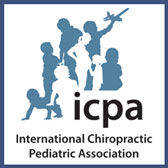 Parents today appreciate knowledge. As practitioners working with parents, it is important that we provide resources for them to make informed choices for their families’ health and well being. Questions about pregnancy, birth options, breastfeeding, medical treatment, nutrition are just some of the concerns parents are actively seeking answers to. When we provide them with the information to answer their concerns, we are offering a valuable service toward promoting the chiropractic family wellness lifestyle.
Parents today appreciate knowledge. As practitioners working with parents, it is important that we provide resources for them to make informed choices for their families’ health and well being. Questions about pregnancy, birth options, breastfeeding, medical treatment, nutrition are just some of the concerns parents are actively seeking answers to. When we provide them with the information to answer their concerns, we are offering a valuable service toward promoting the chiropractic family wellness lifestyle.
In our office, we have an extensive lending library with many books, videos and DVD’s. Throughout the 23 years we have been in practice, many patients have commented on this wonderful resource of information not available elsewhere. True, we have to replace books more often then I would like to; however the replacement fee is small compared to the benefit I know people are getting from the materials we make available. Let’s say, just one mother avoided the Rhogam shot during pregnancy when it contained the harmful preservative thimerosal, or perhaps another chose to change birth providers and avoided a c-section or another parent choose the watch-and-wait approach for their child’s ear infections and also avoided the adverse effects of antibiotics and tubal surgery on their child—well, then the maintenance and replenishing of our library was worth every cent.
Most recently, we are sending every patient who comes in to the I.C.P.A. public website: www.icpa4kids.org. This informative site was designed to provide parents with numerous articles, research references and commentaries about the many issues parents face when making informed health care choices for their families. The “search” option allows them to access many family-related topics.
The I.C.P.A. offers “referral cards,” so doctors can hand them out in their practices and neighborhood family centers throughout their communities. There is a place on the card to personalize it with your center’s name and contact info as well. Parents in your community become aware of you as a doctor providing the resources they are looking for.
Additionally, we carry bulk copies of the I.C.P.A.’s new public magazine, Pathways. This full color magazine is beautifully laid out and gives chiropractic the professional presentation it deserves. The thought-provoking articles in Pathways are core to providing parents with credible information supportive of the wellness lifestyle.
Become a resource center in your office and community and begin providing parents with the information they are actively seeking. Offering parents these sought out materials establishes your credibility and defines you as the family provider respectful of their right to make choices for their families’ lives and well being.
Dr. Jeanne Ohm instructs internationally on the topic “Chiropractic Care for Pregnant Women and Children.” She is executive coordinator of the International Chiropractic Pediatric Association and can be reached via their website at www.icpa4kids.com.




 Having worked with infants for many years and being continuously frustrated by the effects of birth trauma to their delicate nervous systems, I have been drawn to deeper levels of analysis and correction. For many years, I relied on gentle, specific, segmental adjustments of the spine. The extent of these injuries, however, led me to observe their spines from a more global perspective, looking for the effects of dural stress in the cranium and spinal column. I began doing gentle dural stretch releases focusing on the occiput.
Having worked with infants for many years and being continuously frustrated by the effects of birth trauma to their delicate nervous systems, I have been drawn to deeper levels of analysis and correction. For many years, I relied on gentle, specific, segmental adjustments of the spine. The extent of these injuries, however, led me to observe their spines from a more global perspective, looking for the effects of dural stress in the cranium and spinal column. I began doing gentle dural stretch releases focusing on the occiput.
 Health care today is going through a paradigm shift from a symptom disease based system to a function performance based system. Emphasis for care is being placed on the individual’s ability to regain and maintain a state of well being. Practitioners who are in this paradigm respect the body’s own natural ability to be healthy and whole. Consumers are actively seeking providers who are working within this new paradigm.
Health care today is going through a paradigm shift from a symptom disease based system to a function performance based system. Emphasis for care is being placed on the individual’s ability to regain and maintain a state of well being. Practitioners who are in this paradigm respect the body’s own natural ability to be healthy and whole. Consumers are actively seeking providers who are working within this new paradigm.
 Some causes of Macro-traumas in infancy are:
Some causes of Macro-traumas in infancy are: Some causes of Macro-traumas throughout childhood are:
Some causes of Macro-traumas throughout childhood are: